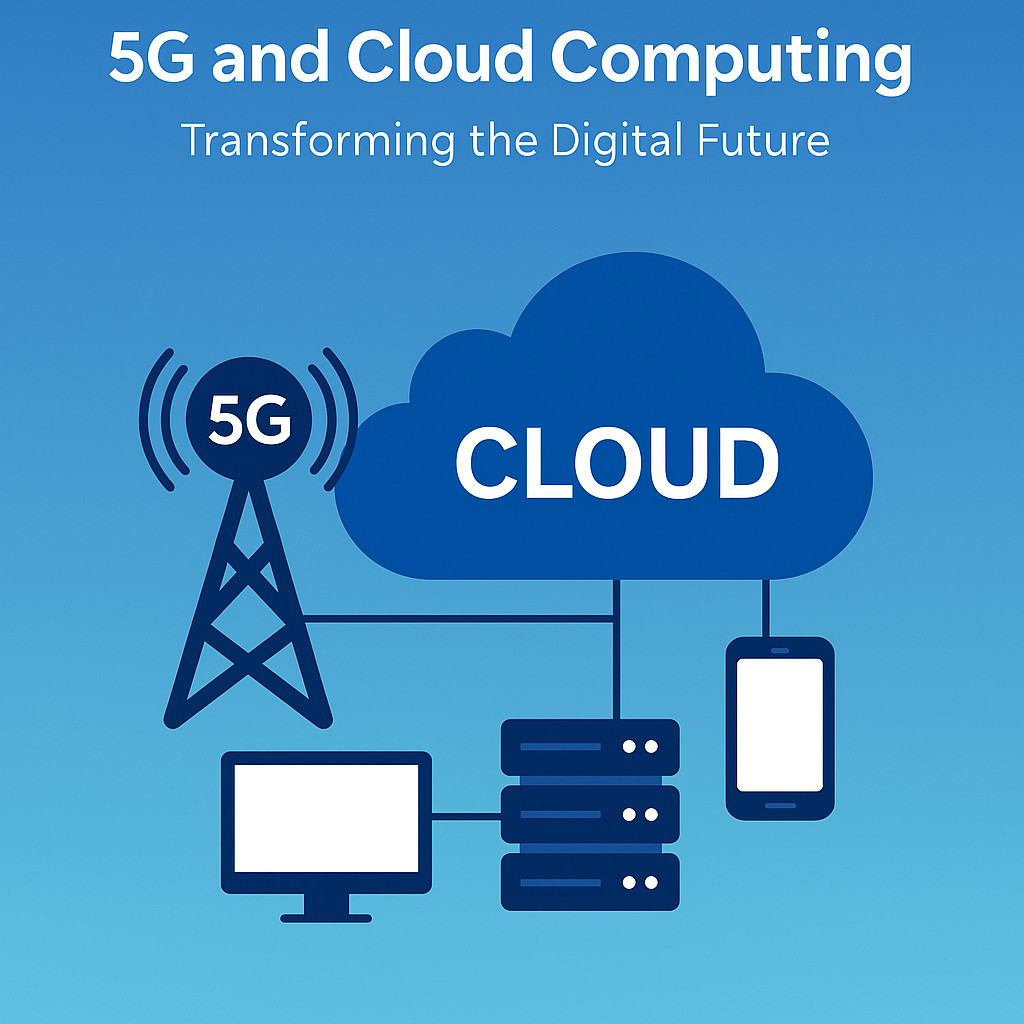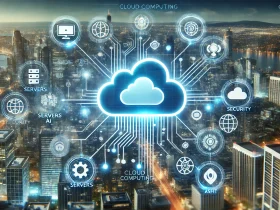5G and Cloud Computing: Impact of 5G on cloud
Introduction: The Fusion of Two Powerful Technologies
As we stand at the edge of a new digital frontier, 5G and cloud computing are converging to reshape the way we connect, communicate, and operate across industries. While cloud computing has already revolutionized how we store and access data, the integration of 5G technology is taking these capabilities to a whole new level.
With ultra-fast speeds, ultra-low latency, and the ability to connect billions of devices simultaneously, 5G is expected to supercharge cloud computing, making it more accessible, more powerful, and more efficient than ever before. This guide will help you understand how 5G works, what sets it apart from previous generations, and most importantly, how it amplifies the value and potential of cloud-based technologies.
What is 5G and Why Is It Different?
5G stands for fifth-generation wireless technology, a major leap forward from 4G. While 4G brought us mobile video streaming and faster downloads, 5G promises to do much more:
- Download speeds up to 20 Gbps
- Upload speeds of around 10 Gbps
- Latency as low as 1 millisecond (compared to 30ms in 4G)
- Support for massive device connectivity
- Increased reliability and network slicing capabilities
To put it simply, 5G enables real-time interaction between devices and systems, even across great distances. This makes it ideal for powering technologies like autonomous vehicles, real-time robotics, remote surgeries, smart cities, and of course—cloud computing.
What is Cloud Computing?
Cloud computing allows users and businesses to store data and access computing resources over the internet instead of using local servers or personal devices. It includes services like:
- Infrastructure as a Service (IaaS) – Rent servers, storage, and networks
- Platform as a Service (PaaS) – Use platforms for developing and deploying applications
- Software as a Service (SaaS) – Access applications like Google Workspace or Microsoft 365
The key benefits of cloud computing include:
- Scalability
- Cost efficiency
- Remote accessibility
- Data backup and recovery
Now, let’s explore how 5G enhances all of these capabilities.
How 5G Improves Cloud Computing
1. Drastically Reduced Latency
One of the biggest limitations of cloud services today is latency—the delay that occurs when data travels between a user and the cloud server. With 5G, latency drops to near real-time, enabling:
- Faster uploads and downloads of large files
- Real-time collaboration on cloud-based apps
- Instant access to data from remote locations
2. Faster File Sharing and Synchronization
Whether you’re working remotely or collaborating with global teams, sharing large documents, video files, or design assets can be time-consuming. 5G’s blazing-fast speed ensures:
- Smoother uploads to cloud storage
- Faster synchronization between devices
- Reduced waiting times for downloads and updates
3. Smarter Workplaces and IoT Integration
Modern workplaces are adopting Internet of Things (IoT) devices to improve efficiency. These devices rely heavily on cloud computing for data processing and storage. 5G enhances IoT integration by:
- Allowing more devices to connect simultaneously
- Reducing communication lag between devices and the cloud
- Improving real-time data analytics for better decision-making
4. Edge Computing Synergy
5G enables a powerful partnership with edge computing, where data is processed near the source instead of relying solely on centralized cloud servers. This means:
- Critical decisions can be made instantly
- Less network congestion
- Better performance for applications like autonomous cars and smart grids
5. Remote Work and Collaboration Made Seamless
In a world where remote work is becoming the norm, 5G allows for:
- Lag-free video conferencing
- Real-time screen sharing
- Secure, fast access to virtual desktops and cloud applications
Real-Life Example: 5G and Cloud computing in Action
Imagine a healthcare company using cloud platforms to store patient records and perform diagnostics. With 5G:
- Doctors can access high-resolution imaging instantly
- Medical staff can collaborate in real-time across locations
- Remote surgeries can be performed with near-zero delay using robotic tools connected through the cloud
This is not science fiction—this is the emerging reality enabled by 5G and cloud convergence.
Broader Benefits of 5G + Cloud Across Sectors
1. Smart Cities
- Traffic lights adjust in real-time based on cloud-processed sensor data
- Surveillance cameras upload high-resolution footage instantly
- Utilities monitor energy usage for better distribution
2. Agriculture
- Cloud-connected drones monitor crop health and irrigation
- Farmers get real-time alerts for weather, pest control, and soil data
3. Logistics & Transportation
- Fleets managed through cloud dashboards with real-time GPS and load data
- Predictive maintenance alerts triggered by IoT sensors
4. Education & Learning
- Online learning platforms become more interactive
- VR/AR learning modules stream in real-time for immersive experiences
Challenges and Considerations
While the potential is vast, there are some challenges to keep in mind:
- Infrastructure costs of 5G deployment
- Data privacy and cybersecurity concerns in cloud environments
- Regulatory compliance across different countries
- Need for skilled professionals in managing 5G-cloud integrated systems
Conclusion: The Future is Cloud-Powered and 5G-Enabled
The convergence of 5G and cloud computing is not just an incremental upgrade—it’s a transformational leap. From enabling smart cities and autonomous vehicles to revolutionizing industries like healthcare, education, and agriculture, this powerful duo is laying the foundation for a hyper-connected, intelligent world.
As 5G continues to roll out globally, cloud computing will become more agile, more efficient, and more accessible to businesses and users alike.
Are you ready to embrace the future of connected technologies? Because with 5G and cloud computing, that future is already here.
For more on emerging technologies, subscribe to our YouTube Channel or explore related guides like:
Visit us at IoTDunia to start your journey into the future of IoT and connectivity.










4 Reviews